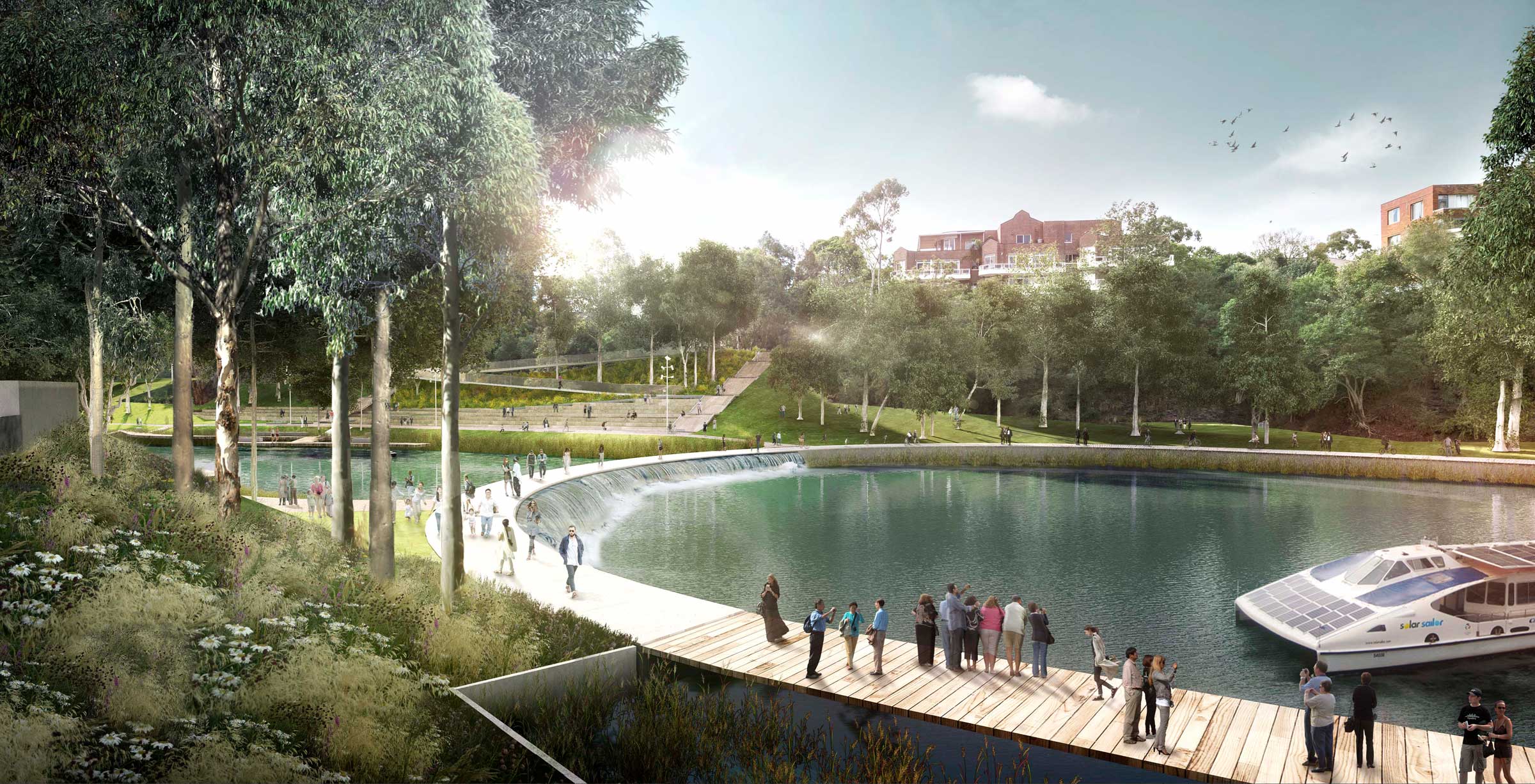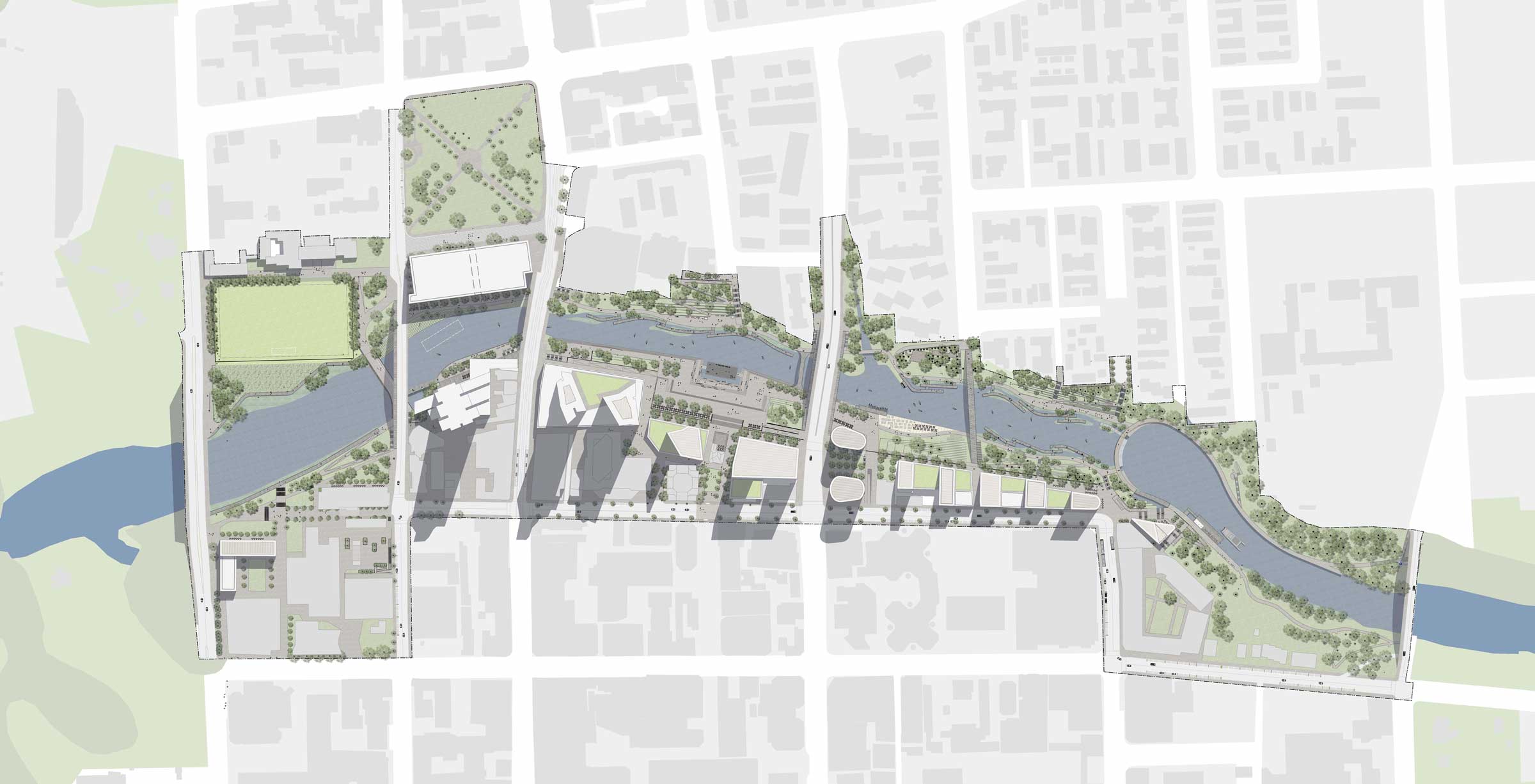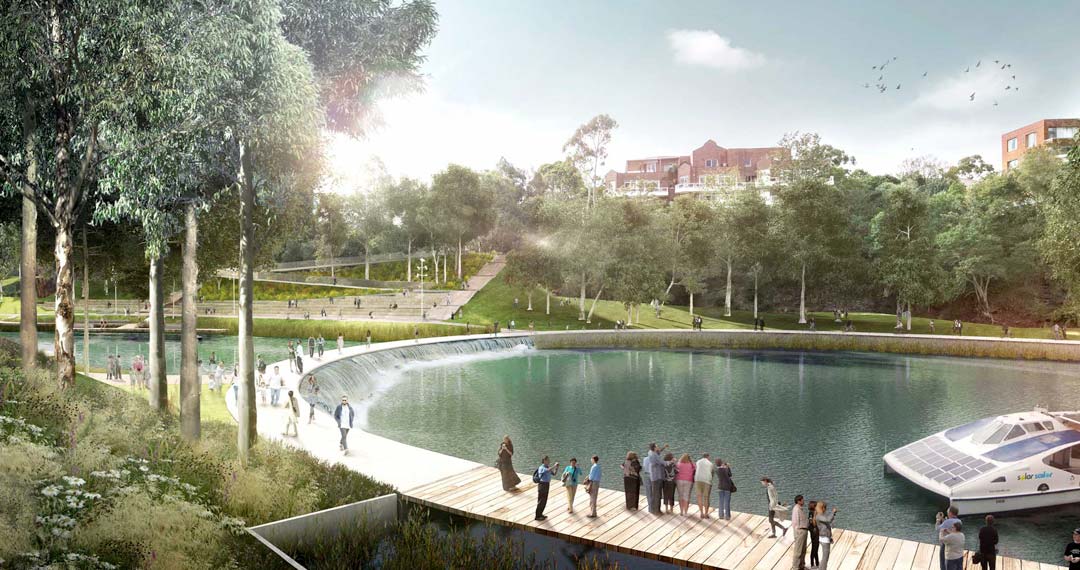Revitalizing the Space "Where the Waters Meet"
焦点公司: McGregor Coxall | 所在地: Sydney, Australia

For the Australian landscape architecture and urban design firm McGregor Coxall, a design has to be more than just a quick solution to a client’s existing problem. Managing Director Adrian McGregor is clear that the built environment should respond to the needs of today, as well as prepare to combat issues that the population will face in the coming decades.
McGregor’s firm uses design to bridge the gap between environment and development, and takes a multi-disciplinary approach to innovation and research-based project solutions. One example of how McGregor Coxall furthers its endeavor to build a more sustainable world is the firm’s work on the Parramatta River Urban Design Strategy.
Today, the Parramatta City Centre is Sydney’s second largest Central Business District (CBD) and the only one located on a riverfront, which presents a distinctive mix of opportunities and challenges for its development. McGregor Coxall’s Urban Design Strategy for the 31-hectare space was meant to reorient the district toward the river, rebranding the location as “Where the Waters Meet” and aimed to revitalize the CBD through an innovative urban realm and four dynamic, mixed-use precincts along the water’s edge. The design created an active waterfront where the city can celebrate its public life.
The software we use has to be intelligent in terms of our carbon footprint modeling. With intelligent BIM, smart symbols, and coordinated worksheets, Landmark gives us the ability to make this happen.
Making an Impression Around the World
McGregor Coxall has made a name for itself in the landscape architecture and urban planning industries, completing over 300 projects across Australia, Europe, and Asia. The firm’s work has earned more than 60 awards, including the prestigious Topos Journal International Landscape Architecture Practice of the Year, landscape’s highest international prize, which honored McGregor Coxall as a proponent of a new wave of environmentally focused landscape architecture, framed within a modernist design approach.
McGregor Coxall’s work on the Parramatta River Urban Design Strategy earned the firm several distinctions, including the Australian Institute of Landscape Architects’ New South Wales Chapter’s Award for Urban Design, as well as the Planning Institute of Australia’s National Award for Urban Design; the Australia Award for Urban Design: Policies, Programs and Concepts — Small Scale; and the Prime Minister’s Australia Award for Urban Design. To achieve such international acclaim and local distinction, McGregor Coxall relies on the 3D modeling and site design tools within Vectorworks® Landmark software.

“We’re really happy with the ability to model large scale environments in Vectorworks and then move into detail with the same software program, allowing us to develop very complex and large 3D documentation packages, create planting plans, and generate worksheets from those plans in order to specify quantities and material takeoffs,” said McGregor. “I also like its graphical abilities. I love that we can use textures and gradients to create really great looking sets of drawings simply through a graphics process.”
The firm also uses Vectorworks Landmark software for its extensive geographical information system (GIS) capabilities. “We do some very large projects in terms of sheer physical size, which requires us to import a vast amount of GIS data and can become extremely complex,” McGregor said. “Landmark lets us incorporate all of that data easily, so that we can focus on design.”

McGregor sees design software as more than a tool to create the built environment; it’s also a way to more efficiently and accurately protect the planet. “I think that one of the great global trends that we have now is a shift toward low-carbon economies where there’s a price on the carbon that’s released into the atmosphere, so it has a value,” he said. “Carbon is now traded as a commodity, and it is unlocking a global market for new renewable energy technologies. Cities are in a rapid state of change that is as big as the Industrial Revolution. The software we use has to be intelligent in terms of our carbon footprint modeling. With intelligent BIM, smart symbols, and coordinated worksheets, Landmark gives us the ability to make this happen.”
Images courtesy of McGregor Coxall


